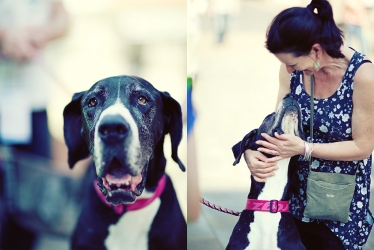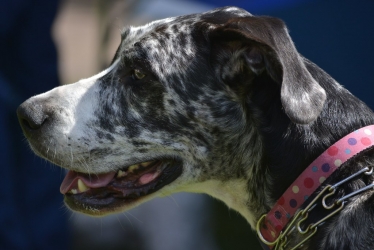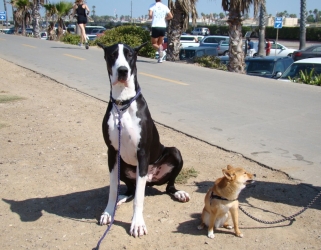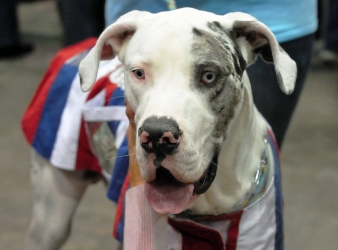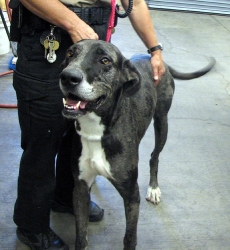Great Dane
Great Dane Behavior and Temperment
| Indoor Activity | Outdoor Activity | Vigor | Consistant Behavior |
| Dominance Strange Dogs | |
| Territorial | |
| Good With Children | |
| Good With Strangers |
Great Dane History
The great Dane was developed in Germany by crossing the English Mastiff and the greyhound. His name "great Dane" is a translation of 'Grand Danois', one of the several names by which the breed was known in France. Why this particular name was chosen for translation is not known. He is also, and more accurately, known as the "Douge Allemand" or German Mastiff.Evidence of his ancestry can be found in ancient Greece. A dog looking very much like the Great Dane is represented on a Greek coin from 36 BC. Paintings from the 16th century, a time when they were considered simply a Greyhounds, showing them hunting wild boar and deer; activities which they excelled at because of their strength, speed, and fast reflexes.
The great Dane had its greatest period of popularity in the 19th century, in England, where a horse and carriage was not considered complete unless it was preceded by at least two Great Danes. One of the best known Great Danes belonged to German Chancellor, Otto Von Bismarck. It accompanied him everywhere, and its death was world news.
Great Dane Description
Slander, but powerful and remarkably fast, the great Dane is a majestic, well proportioned dog. The modern great Dane has retained his hunting instinct, but his natural ferocity has been tempered somewhat by breeders. Thus, he adapts very well to city life and even to households were there are children, since it is docile and well aware of its own strength. The amount of food a specially meet, needed to feed this dog can make is upkeep a real problem.The Great Dane is also highly regarded as a guard dog (they have honorably protected the gold mines of South Africa for many years), and as a bodyguard, if only because their huge size commands respect.
The great Dane has a very short, thick coat. The color of the coat may be fawn, steel blue, black, or brindle (the patter on our featured Great Dane). The harlequin variety has a white coat with small black patches. With the exception of England, their ears are always carried erect, so they are cropped during the puppies first months.
